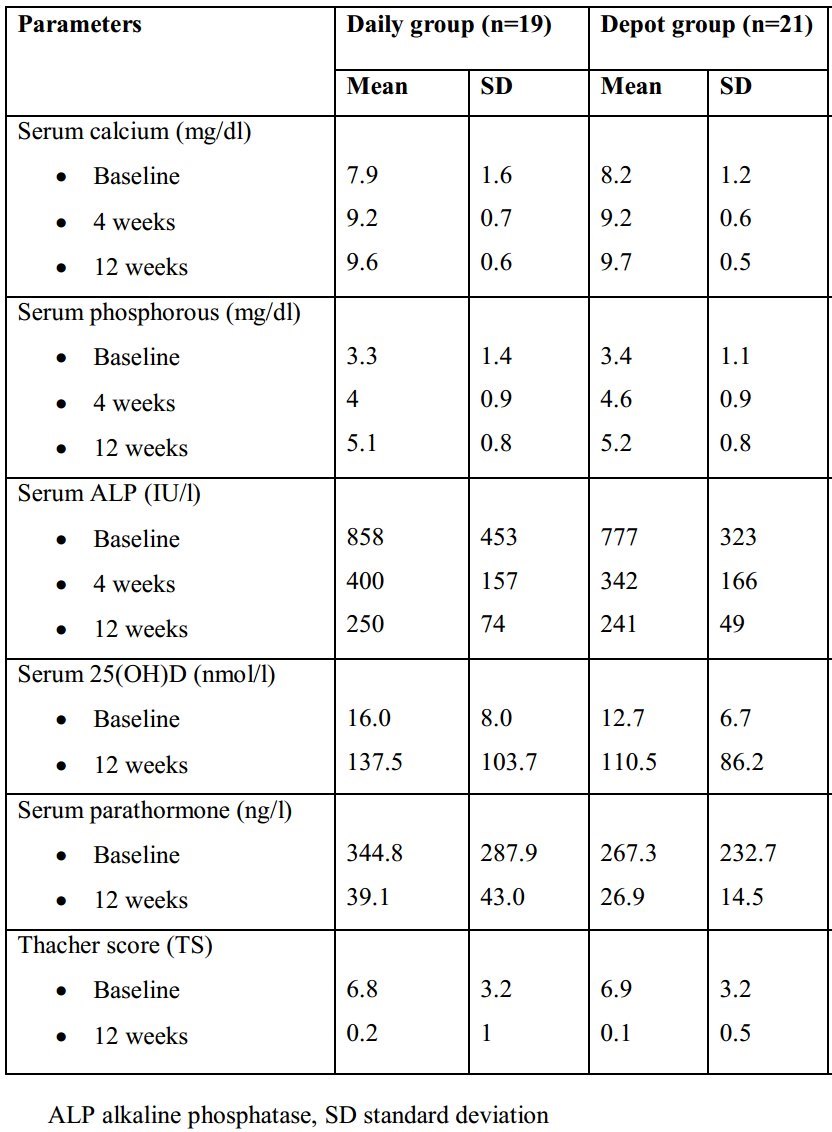Vitamin D loading dose was as effective as daily dosing (rickets in this case) – RCT
Low Dose Depot Oral Vitamin D3 Versus Daily Oral Vitamin D3 for Treating Nutritional Rickets: A Randomized Clinical Trial
Br J Nutr. 2021 Jul 19;1-18. doi: 10.1017/S0007114521002713
Ravneet Kaur Saluja 1, Pooja Dewan 1, Sunil Gomber 1, S V Madhu 2, Shuchi Bhatt 3, Piyush Gupta 1

Note; Radiological healing if Thatcher Score <1.5
📄 Download the PDF from VitaminDWiki
Objective: To compare the efficacy of daily versus low dose depot oral vitamin D3 for treating nutritional rickets.
Design: Randomized Controlled Trial.
Setting: Paediatrics department of a tertiary care hospital catering to semi-urban and rural population in Delhi, India.
Methods: We randomized 66 children aged 3 months to 5 years with nutritional rickets to receive either daily oral vitamin D3 drops (3-12 months: 2000 IU; >12 months-5y: 4000 IU; n=33) for 12 weeks duration, or a single oral depot dose of vitamin D3 granules (3-12 months: 60,000 IU; >12 months-5y: 150,000 IU; n=33).
Results: Participants in both groups had comparable demographic characteristics, laboratory features and radiological severity of rickets. 33 participants in each group received the assigned intervention and all were followed up till 12 weeks. At 12 weeks follow up, children in both groups showed a significant improvement in all biochemical parameters [serum calcium, phosphorus, alkaline phosphatase, parathormone and 25(OH) vitamin D levels] as well as radiological healing. At 12 weeks, the mean (SD) serum 25(OH) vitamin D levels (nmol/L) were statistically comparable in both groups [daily: 120.2 (83.2), depot: 108 (74), P=0.43] and 31 (94%) children in each group had radiological healing (Thacher score <1.5). Two children in each group persisted to have raised alkaline phosphatase and one child each in the daily group continued to have hypocalcemia and hypophosphatemia at 12 weeks.
Conclusion: Low dose oral depot vitamin D3 is an effective alternative to daily oral vitamin D3 for nutritional rickets.
